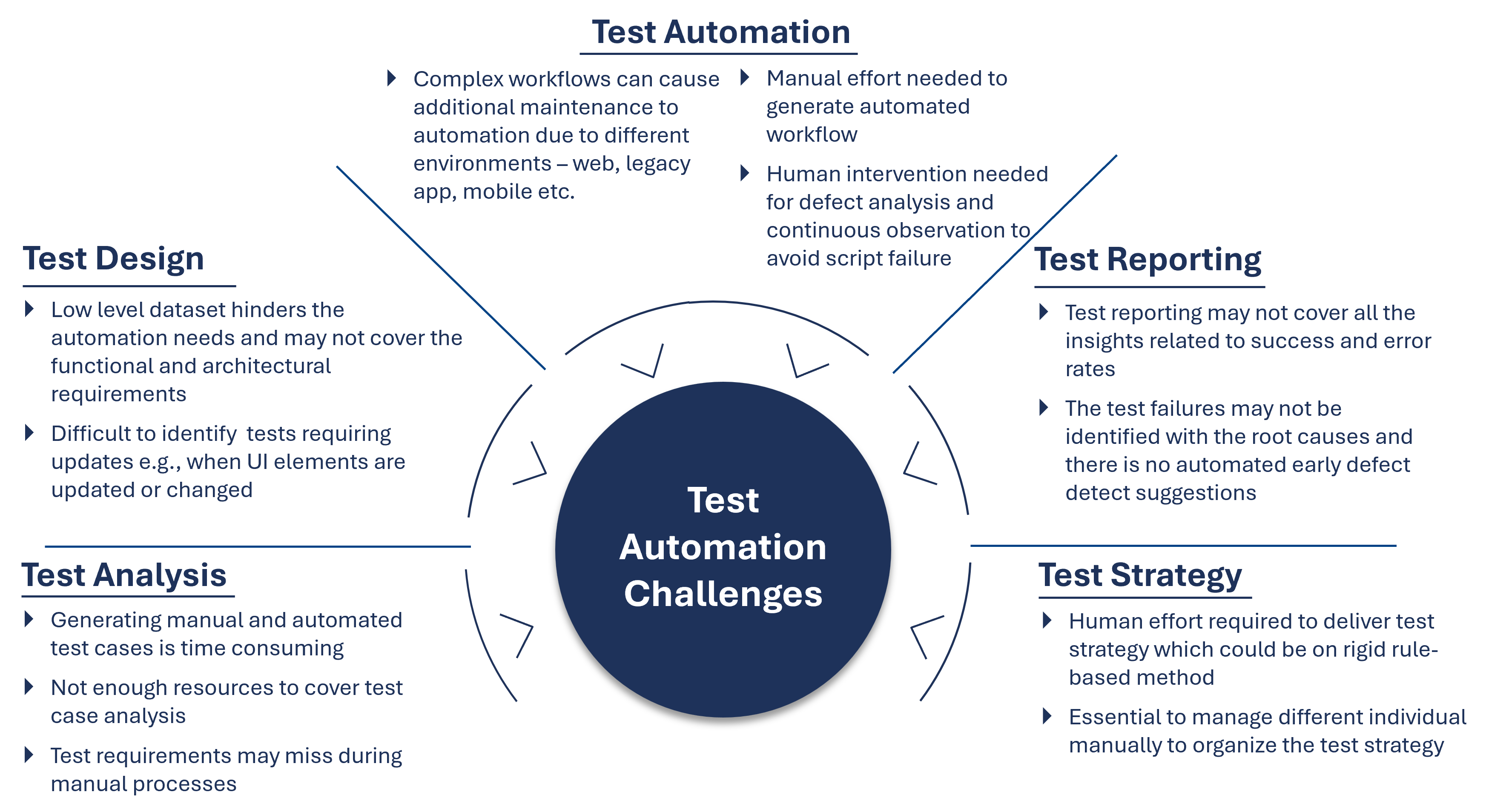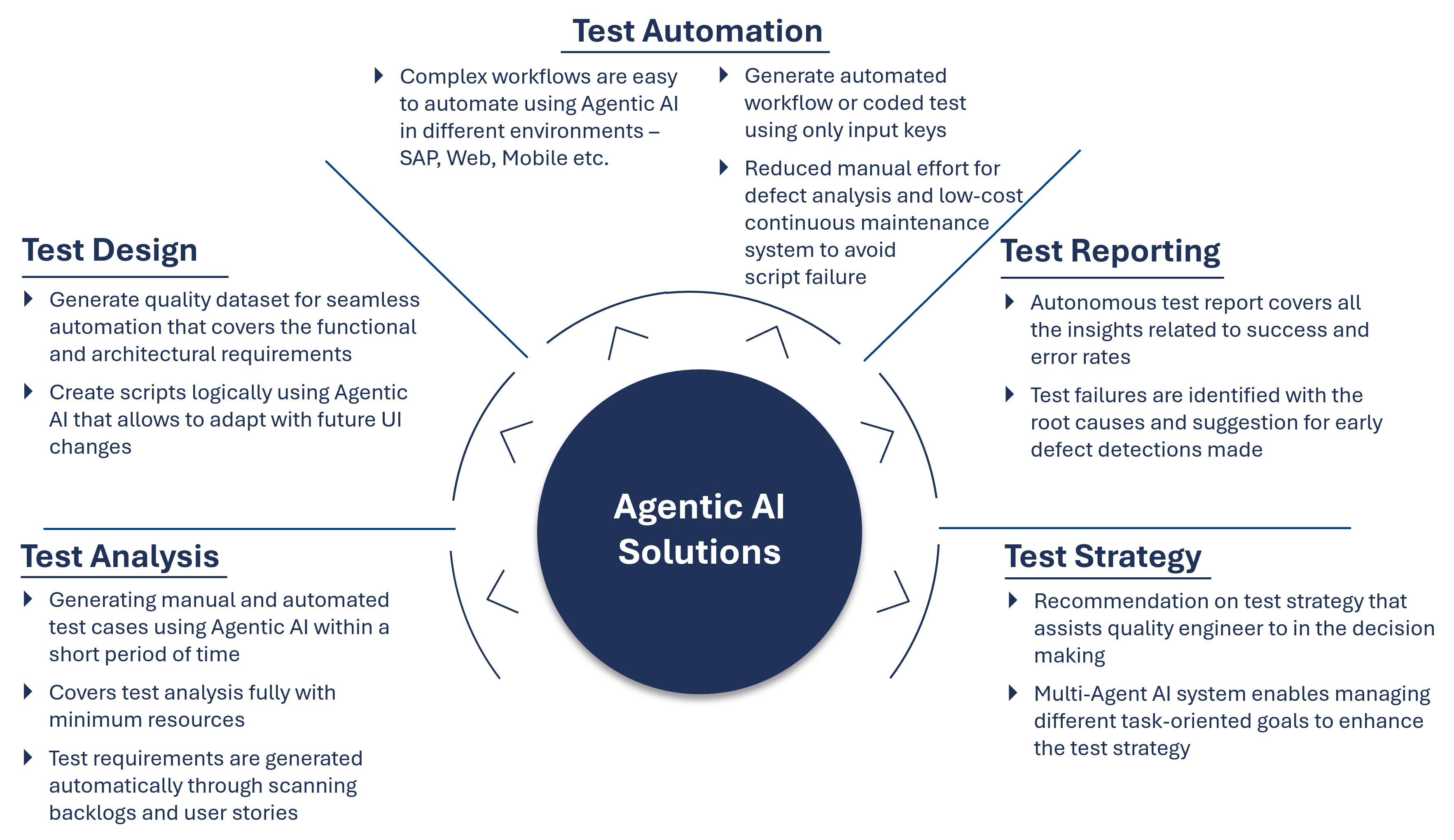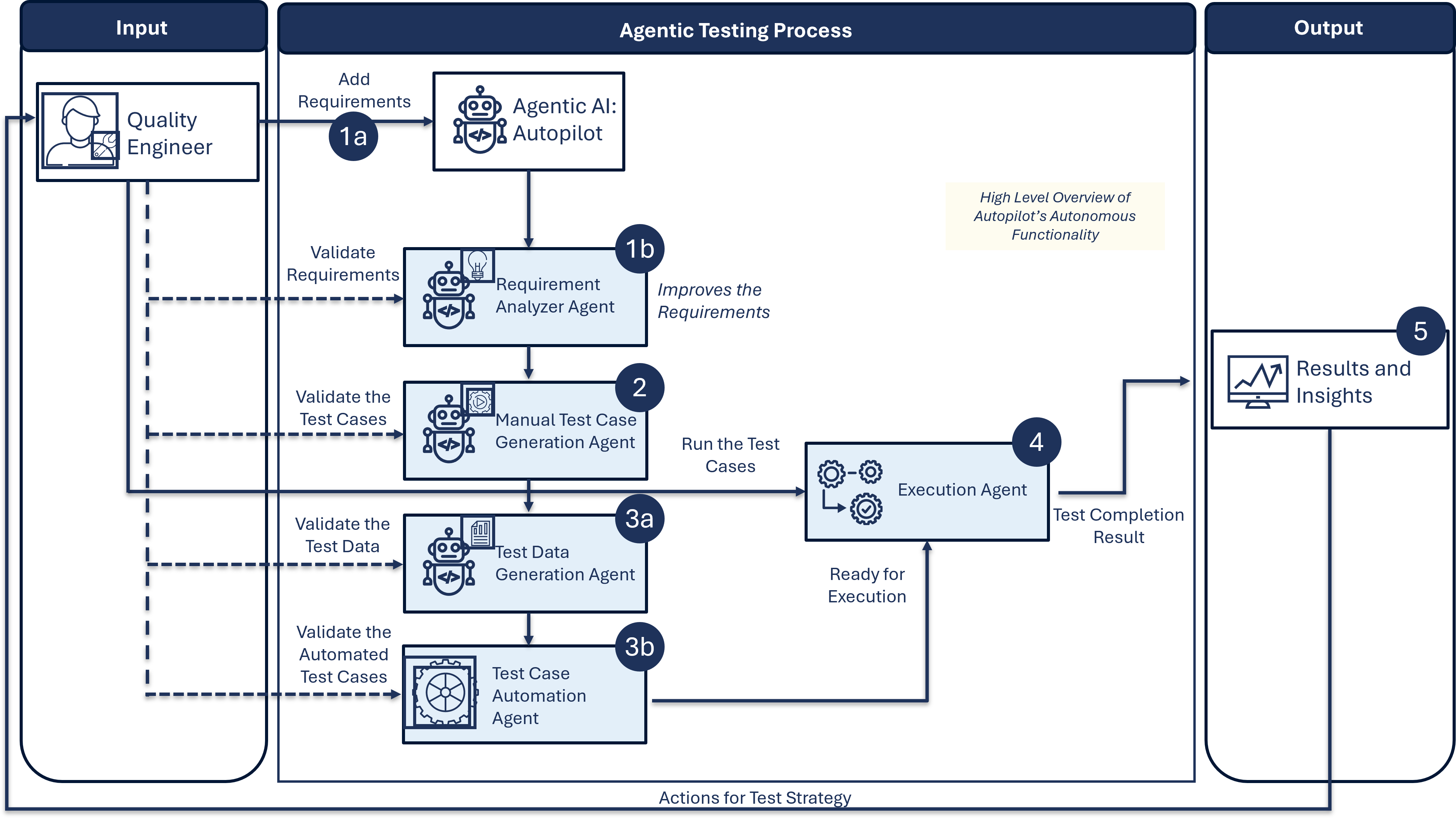
Risk & Resilience in Logistics Network Design
Reimagine resilience and proactively minimize supply chain risks
As businesses push towards an increased level of digitalization, they need testing solutions that are adaptive, intelligent, and scalable. But traditional testing, including test automation, is hitting a wall – sluggish, script-heavy, and unable to keep pace with evolving enterprise systems. The future? Agentic Testing: a smarter and more adaptive approach that transforms how testing is planned, executed, and optimized.
This blog explores Agentic AI in software testing and how it addresses testing challenges.
What is Agentic AI? Agentic AI is all about developing smart, autonomous systems that can cooperate with humans and other AI agents while adapting to changing circumstances. Think of Agentic AI as an autonomous Q&A co-pilot – it learns, adapts, and takes the initiative in real-time.
What is Agentic Testing? Unlike traditional test automation, agentic testing doesn’t follow static scripts. Instead, it uses self-learning ability to generate test cases, heal broken automations, and detect defects intelligently. The result is smarter, faster, and more scalable testing with less manual effort.
While it is common knowledge that manual testing is costly, slow, and resource-intensive, the challenges of test automation are less well-known. Traditional Test Automation pressures to automate repetitive tasks with precision, but as enterprise applications become more complex, these rule-based workflows struggle to keep up with modern testing demands. Some of the challenges that traditional test automation faces are:

[1] https://www.quinnox.com/blogs/7-key-metrics-for-automated-regression-testing-success/#:~:text=For%20Instance%2C%20a%20retail%20company,maintenance%20time%20to%20just%20
[2] https://www.mabl.com/blog/top-5-lessons-learned-in-2024-state-of-testing-in-devops-report#:~:text=Mobile%20app%20development%20teams%20face,test%20coverage
[3] Parry, O., Kapfhammer, G. M., Hilton, M., & McMinn, P. (2021). A survey of flaky tests. ACM Transactions on Software Engineering and Methodology (TOSEM), 31(1), 1-74.
[4] https://www.testresults.io/articles/test-automation-report
[5] https://www.testdevlab.com/blog/how-to-maintain-your-test-automation-script?
Agentic AI can act upon current challenges by combining autonomy, adaptability, and intelligent decision-making across the test automation domain. Figure 2 provides agentic solutions for these test automation challenges.
Agentic AI can be applied to a test automation system that is highly complex, large-scale and goal-oriented. Different AI agents are distributed for the specific parts of the goal of test automation to leverage performance, efficiency and work cooperatively with or without the intervention of human feedback.

Creating a Business Partner (BP) in SAP Master Data Governance (MDG) is a multi-step manual process that involves a test data creation process including identifying test data, data entry, validation, workflow approvals, and audit tracking. In this use case, we apply UiPath Autopilot as an example for Agentic AI in testing.
Test Analysis (1a) Quality Engineer begins by defining the requirements in UiPath Test Manager Suite, by importing them from external sources such as Jira or Excel.
Test case steps:
| # | Test step | Input data | Expected Result |
| 1 | MDG Logic | User, Password | Login to MDG successfully |
| 2 | Create Change Request New BP | – | Change request for new BP is accessible |
| 3 | Complete the change request form | Description, Name, Street, House Number, Postal Code, City, Country, Email, Website | Data entered |
| 4 | Save change request | – | Change request is saved |
| 5 | Submit change request | – | Change request is submitted |
| 6 | Approve change request | – | Change request is approved |
(1b) For the mentioned manual test steps, Autopilot improves the requirement quality in Test Manager Suite using AI-powered evaluation (agent). The test developer verifies and approves the requirements enhancements.
Test Design (2) Next, the developer requests Autopilot to generate test cases for the new Business Partner scenario. The AI-powered generation agent creates structured manual test cases based on the refined requirements. After reviewing, the developer selects the relevant cases and asks the AI-powered automation agent to automate them.
Test Automation (3a) With a single click, the AI-powered automation agent generates tailored synthetic test data for each scenario and (3b) transforms manual test cases into clean, executable code. Test developers review and validate the output, combining the speed of automation with expert oversight-accelerating testing without compromising quality.
Test Reporting (4) The Autopilot runs on the SAP MDG environment and creates a successful test completion. In the end, the Autopilot generates a detailed report with insights, suggestions, and failure reasons if applicable.
Test Strategy (5) The provided results and insights support the quality engineer or tester in creating an overall AI-based seamless testing process overview and thereby derive actions for the testing strategy. This is not part of the showcase.

This use case illustrates how Agentic AI brings autonomy, efficiency, and adaptability to SAP MDG test automation, reducing manual effort while improving the overall test quality and velocity.
As digital systems grow more complex, traditional test automation falls short. Agentic AI transforms testing with intelligence, adaptability, and autonomy – minimizing manual effort and enabling true Hyperautomation. It empowers leaders with faster releases, better quality, and greater scalability. Agentic AI is not a future concept – it’s a strategic enabler for transformation today. At Camelot, a part of Accenture, we are helping organizations harness their power to move from reactive testing to proactive assurance.
Co-authors: Yassine Bouknify, Karishma Mohiuddin, André Richter

Reimagine resilience and proactively minimize supply chain risks

This article shall help you to understand how to optimize your inventory positions in a month – or even less.

Modern PLM systems empower businesses to achieve product excellence in fast-paced markets by enhancing collaboration, agility and innovation.

Read how the Campaign Planner & Designer (CPD) helps you to manage supply chain variability.
© Camelot Management Consultants, Part of Accenture
Camelot Management Consultants is the brand name through which the member firms Camelot Management Consultants GmbH, Camelot ITLab GmbH and their local subsidiaries operate and deliver their services.